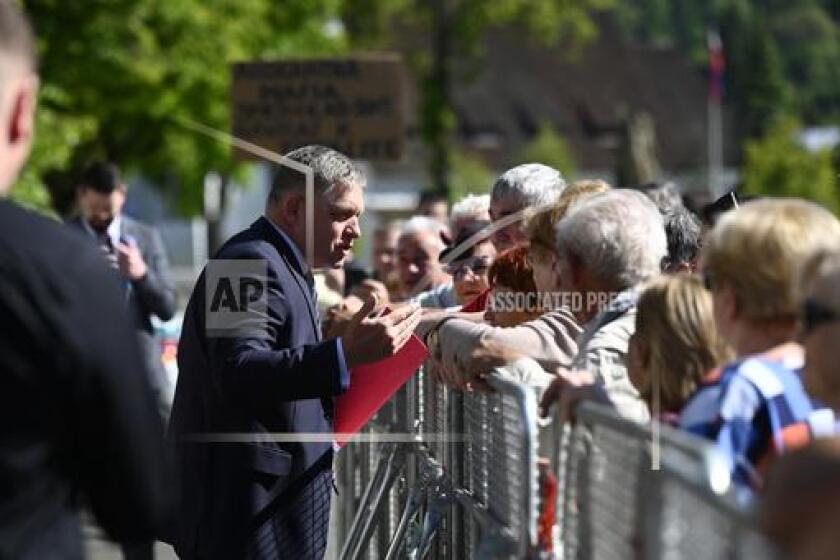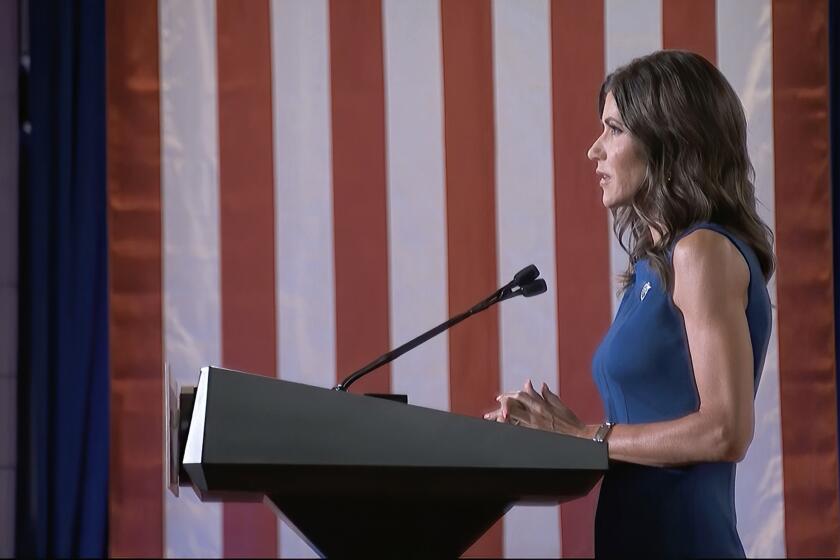Iran Casts Shadow on Afghan Political Map
Iran has sent senior military officers into three southern provinces of Afghanistan in an attempt to undermine the fragile process of this war-torn nation’s reunification, a respected member of Kandahar’s provincial government charged Wednesday.
Mohammed Yusef Pushtoon, a close aide to Kandahar Gov. Gul Agha Shirzai, said senior Iranian military officers have been operating in Farah, Nimruz and Helmand provinces for the last two weeks, trying to lure local warlords away from commitments to back the new central government in the Afghan capital, Kabul.
Pushtoon identified two of the officers as Iranian army generals using the names Afghani and Baghani and claimed that both were still in Afghanistan as of four days ago.
He claimed that the generals had offered warlords incentives, including what he termed “goods and materials,” in return for withholding backing from the new government, adding that he had also received unconfirmed reports that cash and arms had been offered.
President Bush this month pointedly warned Iran not to meddle in the internal affairs of this country, long a geopolitical playground where empires and great powers have vied for influence.
Although the United States has previously voiced alarm about reports of Iranian government activity in Herat and Helmand provinces, Pushtoon’s comments marked the first public accusations that Tehran is also operating in Nimruz and Farah. The four provinces make up a broad swath of western and southern Afghanistan.
“Iran has broken some basic international norms by sending high military officers into the country without our permission and even without informing the central government,” Pushtoon charged. “They’ve spent weeks in these provinces, visiting previous warlords, encouraging them to stay out of cooperating with the central government.”
Kandahar’s new provincial government, located in the city of the same name that is the country’s second-largest, claims overall administrative responsibility for the six southernmost Afghan provinces, some of which border Iran.
One Afghan Warlord Has Ties to Iran
Pushtoon also said that reports from the western city of Herat indicated an even deeper Iranian involvement in the affairs of Herat province. The province, which borders Iran, is controlled by a legendary warlord named Ismail Khan. The warlord, a Shiite Muslim, spent years in exile in Shiite-dominated Iran before returning to power in November after the Taliban’s retreat from the region.
Kandahar is deep in Afghanistan’s “Pushtun Belt.” Pushtuns, who make up the country’s largest ethnic group and were the Taliban’s chief supporters, are Sunni Muslims.
“Cooperation between the Herat administration and Iran is already beyond all logical involvement,” Pushtoon said. “Their contact should be with Kabul, not Ismail Khan.”
No Formal Action From Interim Government
Pushtoon said the interim government in Kabul has been informed of the activity but indicated that it had yet to take any formal action.
Pushtoon’s comments, made in an interview, came in response to a request for clarification of persistent reports that Iranian government representatives were in Helmand and Herat working to establish their influence.
“Definitely there’s truth in it,” he said.
Bringing all areas of the country under the control of one government is viewed as one of the most difficult, yet important, tasks in making the new Afghanistan a viable nation-state. Rugged geography, a diverse ethnic mix and Afghans’ free-spirited nature have historically made it difficult for any government in Kabul to exercise its control over the entire country. The centuries-old struggle over Afghanistan among foreign empires was immortalized by Rudyard Kipling as “The Great Game.” In a recent incarnation, for example, it was Pakistan’s attempt to secure Afghanistan as a client state that led to the rise of the Taliban eight years ago.
As the U.S. air campaign commenced against the Taliban in October, so too did the next round of this Great Game. Tehran, many argued, wanted a friendly government in Kabul to facilitate new north-south trade routes from the landlocked, mineral-rich former Soviet republics of Central Asia to Iran’s Persian Gulf ports.
But there are other theories too.
Guessing at Iran’s Motives
One, for example, is the grand prize of oil routes. Iran and Afghanistan are competitors for the preferred next route for getting the Caspian Sea’s recently discovered oil riches to lucrative Asian markets. As long as Afghanistan remains weak and unstable, Iran keeps its chances alive.
Another theory, voiced by Pushtoon, rests on the belief that Tehran has been unnerved by America’s military might and by the continued presence of U.S. forces in southern Afghanistan. About 3,600 U.S. soldiers and Marines are stationed at Kandahar airport as part of longer-term efforts to consolidate the ouster of the Taliban.
To these oft-heard reasons for Iranian activity, Pushtoon adds a fourth: the likely return to favor of Afghanistan’s former king, Mohammad Zaher Shah, as a kind of spiritual political figurehead could rekindle the hopes of Iran’s royals.
Fears That Tehran Is Consolidating Influence
The shah of Iran was overthrown in a 1979 revolution.
Alternatively, some in Kandahar believe that Shirzai is playing up the fears about Iran to tighten his grip over the entire southern part of the country.
Whatever the reasons, some recent visitors to Tehran said Iranians appear convinced that the end of the Taliban’s extremist Sunni Muslim rule meant that Afghanistan had fallen into Iran’s political orbit.
Pakistani academic Rasul Bakhsh Rais, who recently attended a seminar on Afghanistan in the Iranian capital, said he was surprised by the mood of those present.
“The whole tenor of the conference was that Afghanistan was now in Iran’s sphere of influence,” he said. “The question was how to deal with this reality.”
More to Read
Start your day right
Sign up for Essential California for news, features and recommendations from the L.A. Times and beyond in your inbox six days a week.
You may occasionally receive promotional content from the Los Angeles Times.






